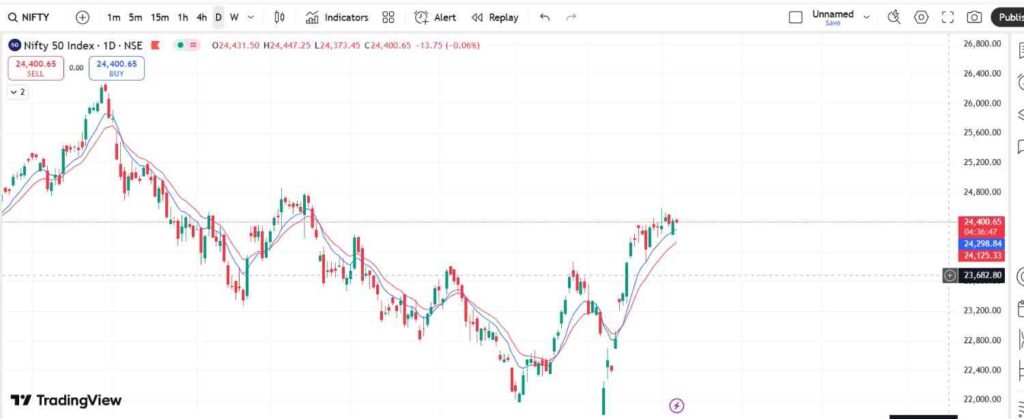Introduction
As US investors look beyond domestic markets for high-growth opportunities, India has emerged as a hotspot. One term you often hear in Indian finance news is the “Nifty 50.” But what exactly is it, and why should US investors pay attention to it? And is it the right thing to do?
What is Nifty 50?
Nifty 50 is the benchmark stock market index of the National Stock Exchange of India (NSE). It represents a weighted average of the 50 largest and most liquid companies listed on the NSE. Think of it as India’s version of the S&P 500, but more focused – covering only the top 50 blue-chip stocks across 14 sectors. And Nifty 50 is an important index in India that targets the entire automotive, tech and many other sectors.

Key Features of Nifty 50
- Launched: 1996 by NSE and managed by NSE Indices Limited
- Base Year: 1995 with a base value of 1000
- Reviewed Semi-Annually: Companies are added or removed based on free-float market cap and liquidity
Top Sectors: Financial services, IT, oil & gas, FMCG, and pharma
Why Should U.S. Investors Care About Nifty 50?
1. Emerging Market Growth
It is estimated that by 2030 India will become the third largest economy in the world. Nifty 50 gives information about the top performing companies of the country. And it is one of the strongest indices
2.Diversification
Investing in Nifty 50 ETFs or index funds helps diversify your US-focused portfolio with high-growth emerging market assets. Since US companies have grown and Indian companies are growing, now is the right time to invest.
3. Strong Tech and Financials
Key players like Infosys, HDFC Bank and Reliance Industries are global companies with strong fundamentals, which will not allow Nifty 50 to fall easily
How to Invest in Nifty 50 from the U.S.
- Nifty 50 ETFs on U.S. Exchanges: Funds like the iShares India 50 ETF (INDY) track the index.
- International Brokerage Accounts: Platforms like Interactive Brokers or Charles Schwab allow U.S. investors to access Indian equities.
- Indian Mutual Funds with Global Access: Some Indian AMCs offer feeder funds accessible via U.S. platforms.
Risks to Consider
- Currency Risk: INR/USD exchange rate can impact returns.
- Regulatory Differences: India’s market is governed by SEBI, with different rules than the SEC.
- Volatility: Emerging markets carry higher short-term risk compared to developed economies.
Conclusion
The Nifty 50 is more than just a stock index — it’s a window into the core of the Indian economy. For US investors aiming to take advantage of global growth, understanding and potentially investing in the Nifty 50 can be a strategic move. Just remember to align it with your risk tolerance and long-term goals.


Your words have a quiet magnetism, drawing the reader inward without force. They linger, cultivating thoughtful engagement and contemplative reflection.